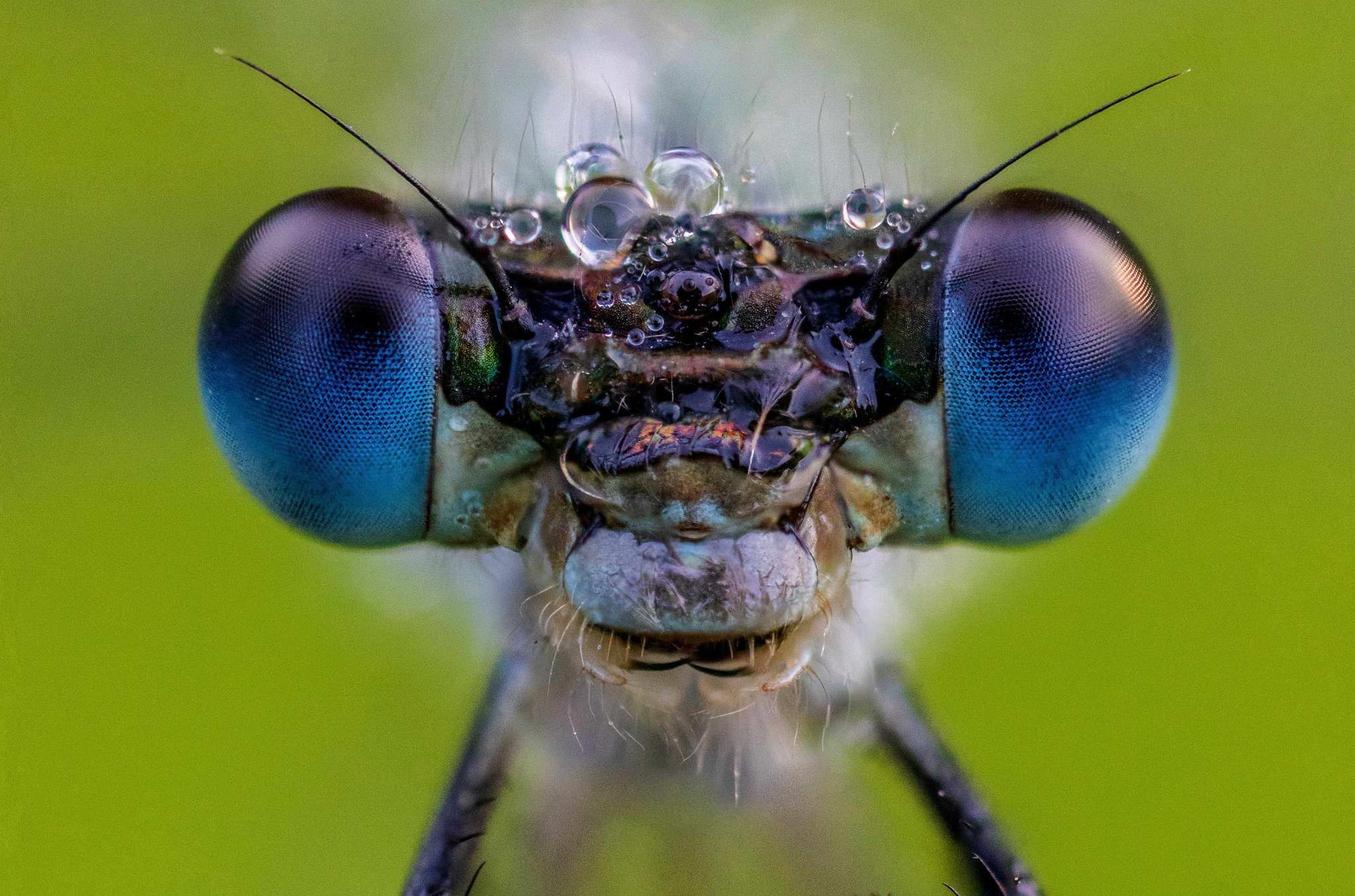
Eye Spy
Damselflies and dragonflies can be very flighty and take off at the slightest disturbance, but if you’re lucky, you may get a good view of one. Megan Shersby takes a close look at these winged jewels of the water – see if you can spot any of these species or behaviours in the wild
EMERALD DAMSELFLY PORTRAIT
By taking a series of images at different focal lengths, photographer Oliver Wright has created a stacked image of this emerald damselfly looking directly at the camera. The most common of the damselfly species in the UK, the emerald damselfly can be identified by the position in which it rests. While dragonflies rest with their wings held straight out, and other damselflies rest with their wings held together above the body, the emerald damselfly chooses the middle option. It holds its wings open at 45 degrees when perched, leading to the alternative name of ‘common spreadwing’.
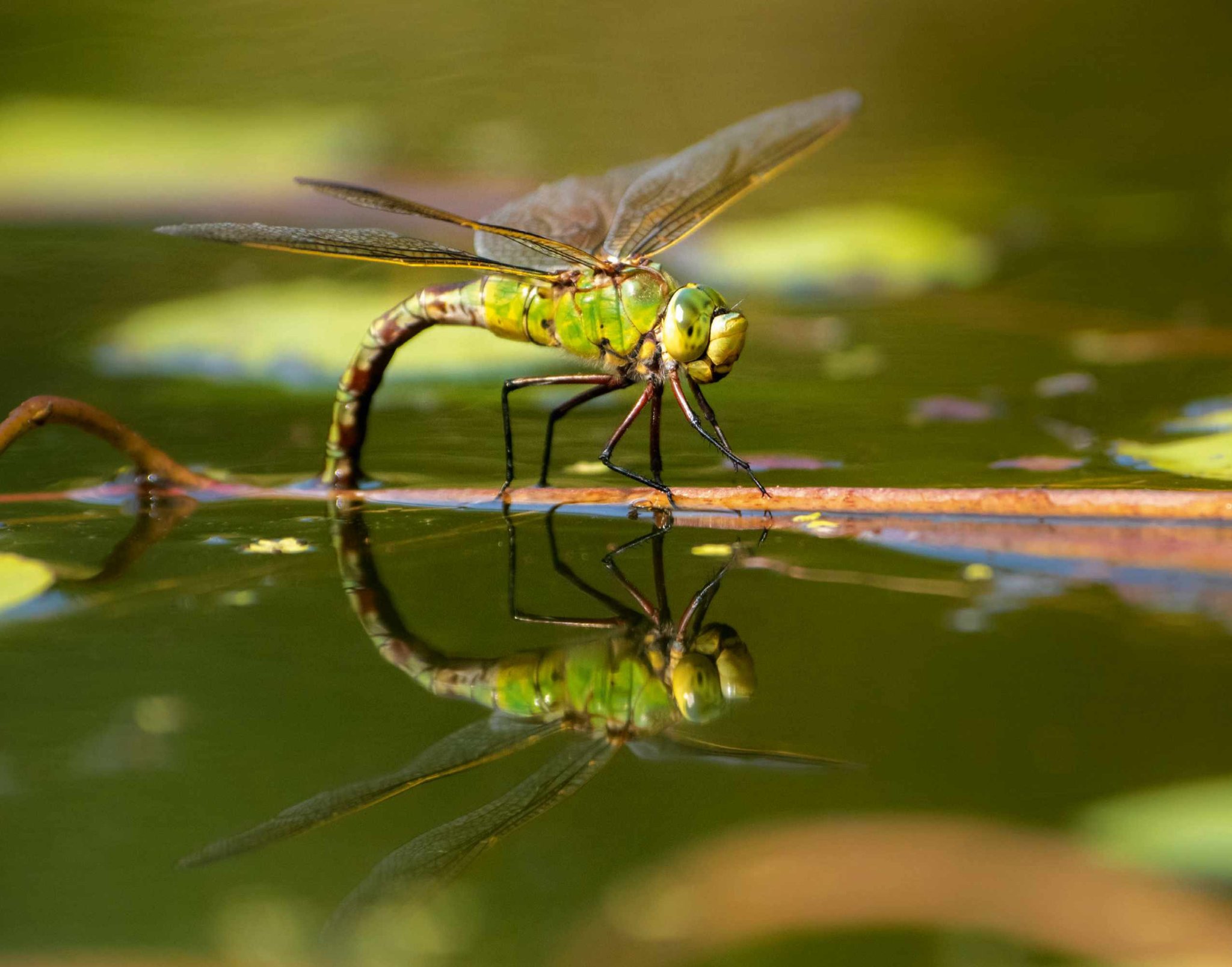
EMPEROR DRAGONFLY OVIPOSITING
Ever spotted a dragonfly or damselfly with its tail dipping in and out of the water? This is a female laying her precious eggs, either using her sharp ovipositor to lay the eggs into plant stems or rotten wood, or laying them loosely in the water. The former are known as endophytic eggs and the latter as exophytic.
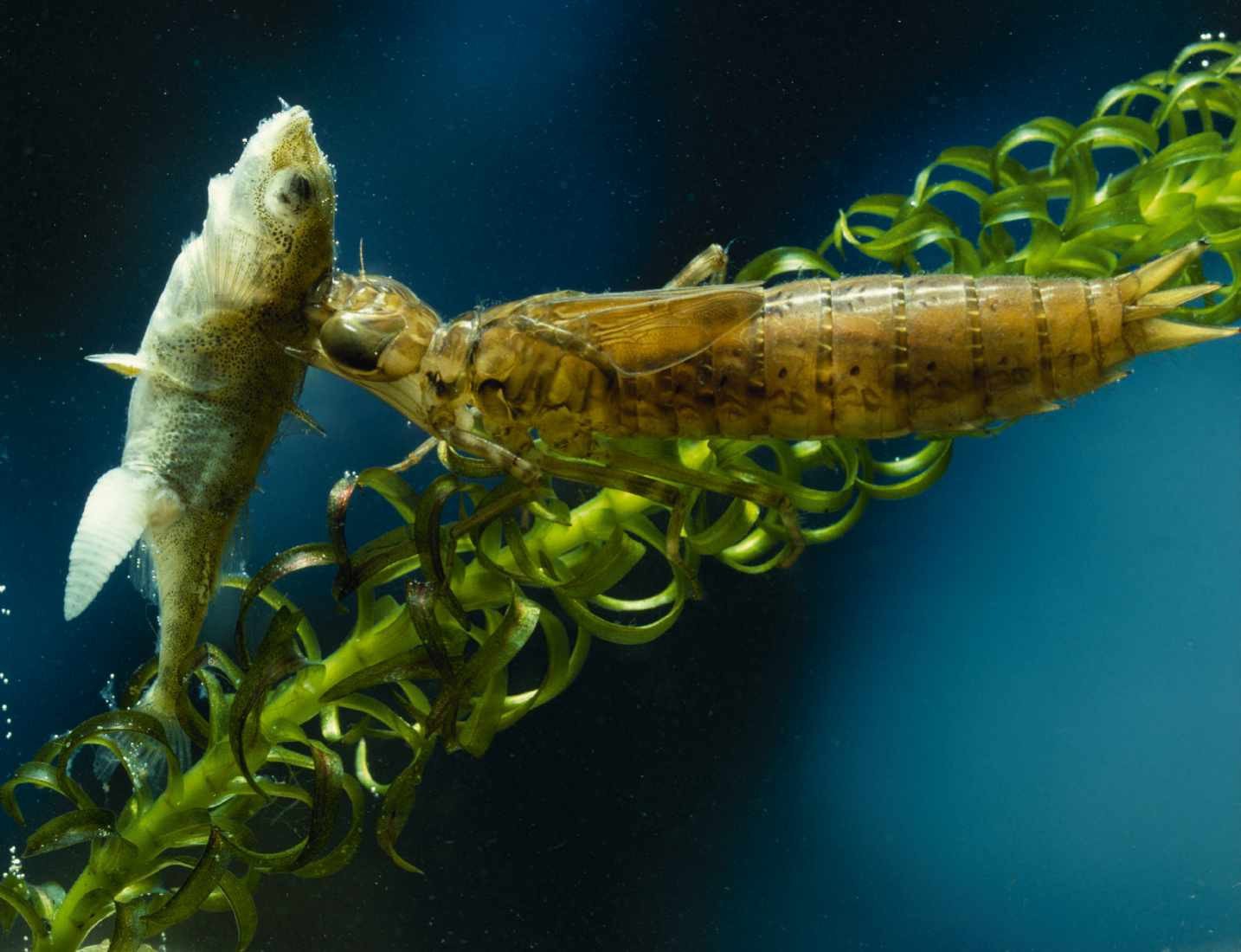
DRAGONFLY LARVAL NYMPH
Odonata (the order of flying insects that includes dragonflies and damselflies) have a fascinating life cycle, spending their larval years underwater, when they are known as nymphs. They are predatory, eating small animals; larger species even catch small fish. It is tricky to differentiate species, but damselflies have three longer structures at the end of their body called caudal lamellae, so look similar to mayfly nymphs.
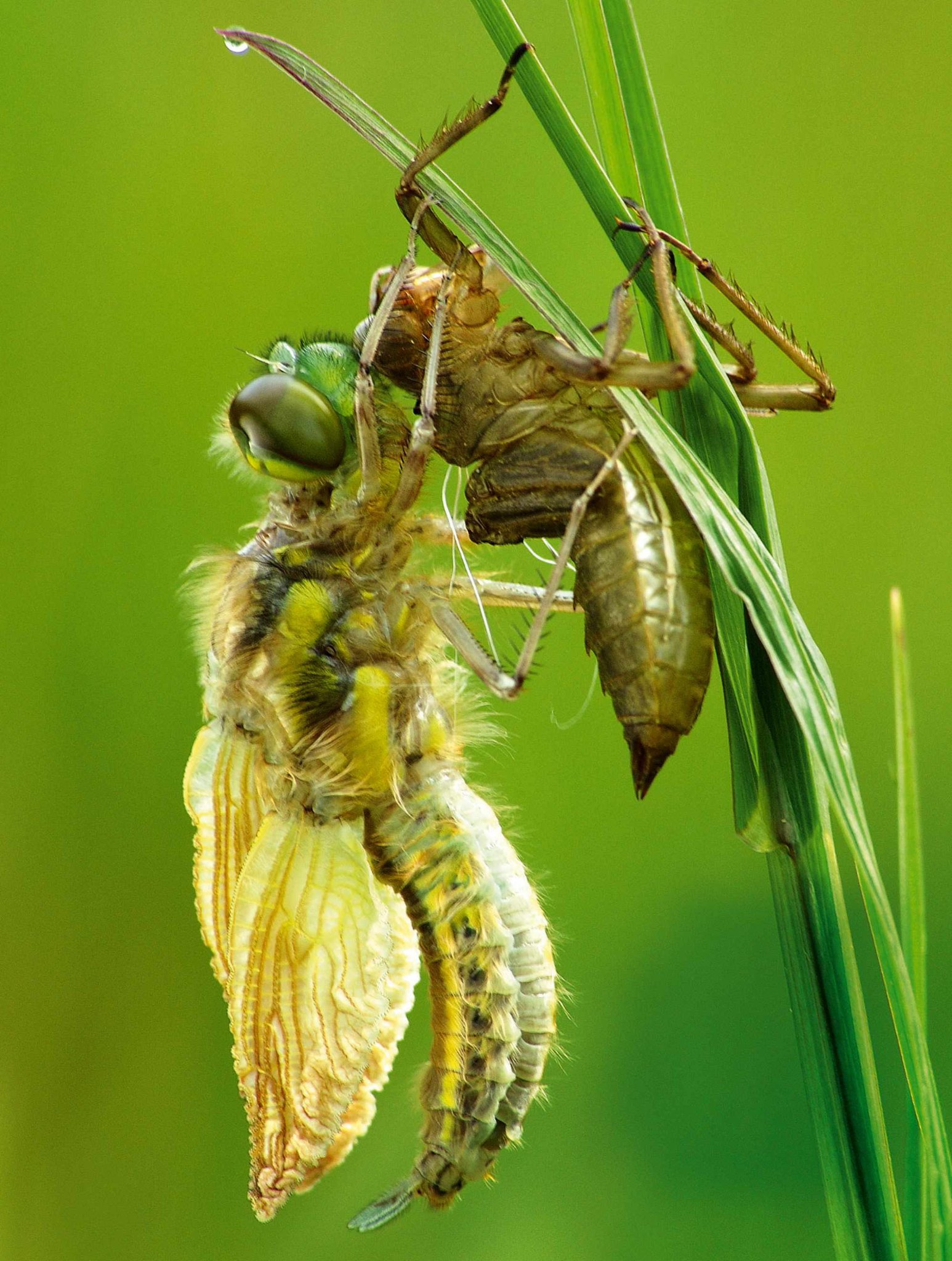
FOUR-SPOTTED CHASER DRAGONFLY EMERGING
To make the transition from underwater nymphs to dazzling fliers, dragonflies and damselflies must undergo an extraordinary transformation. Unlike some insects, they don’t have a pupal stage and undergo ‘incomplete metamorphosis’. In the final nymph stage, they climb on to emergent vegetation, break open their skin and climb out. If you’re lucky, you may spot them during this stage, as they need some time for their bodies to harden and their wings to expand, as seen here. Even if you miss this extraction and hardening process, look out for the left-behind skin, still attached to the vegetation, which is known as an exhuvia.
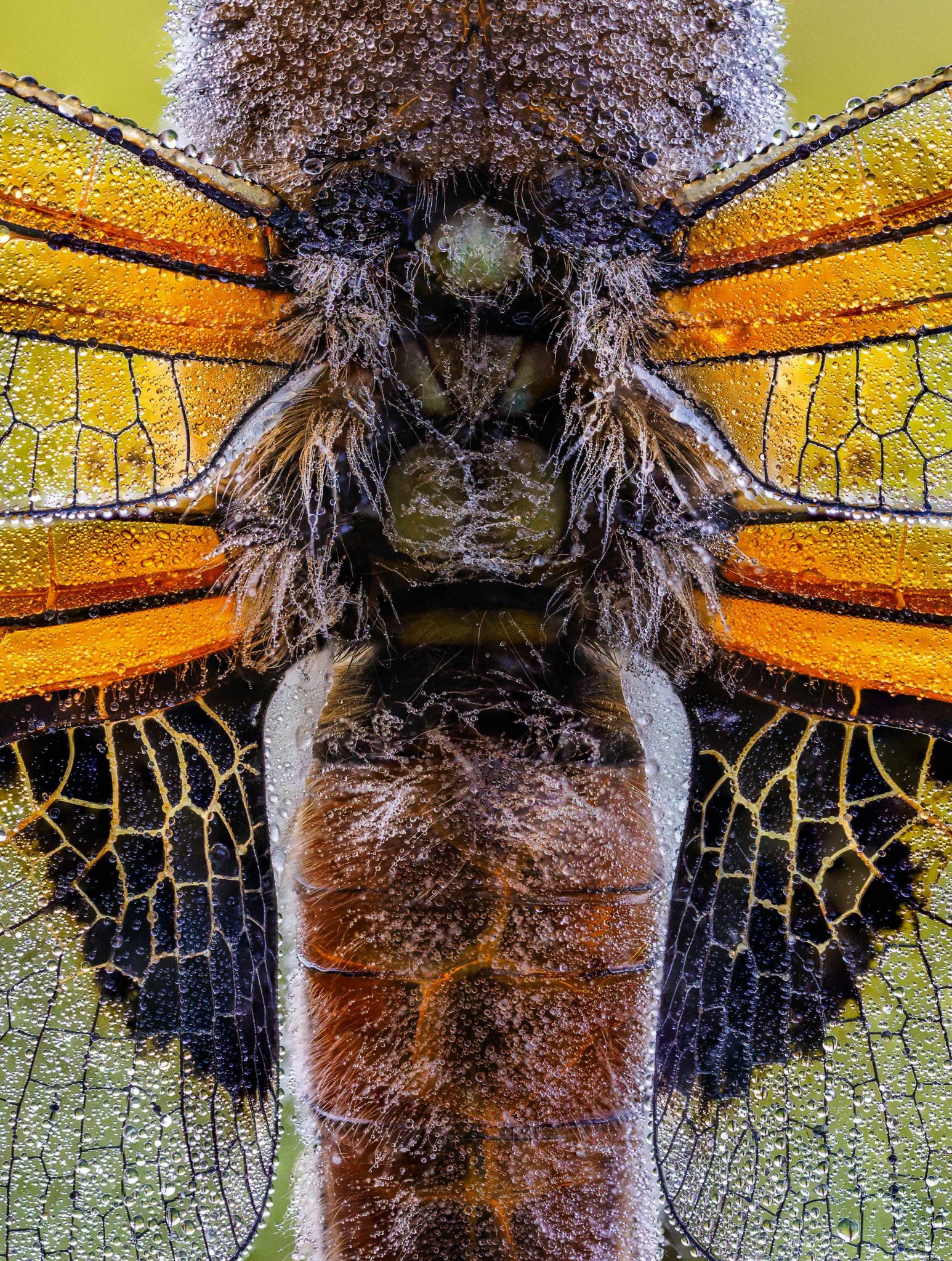
FOUR-SPOTTED CHASER DRAGONFLY
Covered in dew and waiting for the sun and the air temperature to rise, the four-spotted chaser dragonfly is not as brightly coloured as other chaser species, instead wearing golden and brown tones. Like bumblebees and moths, dragonflies can vibrate their wings in order to warm up their flight muscles and remove the water droplets before taking off.
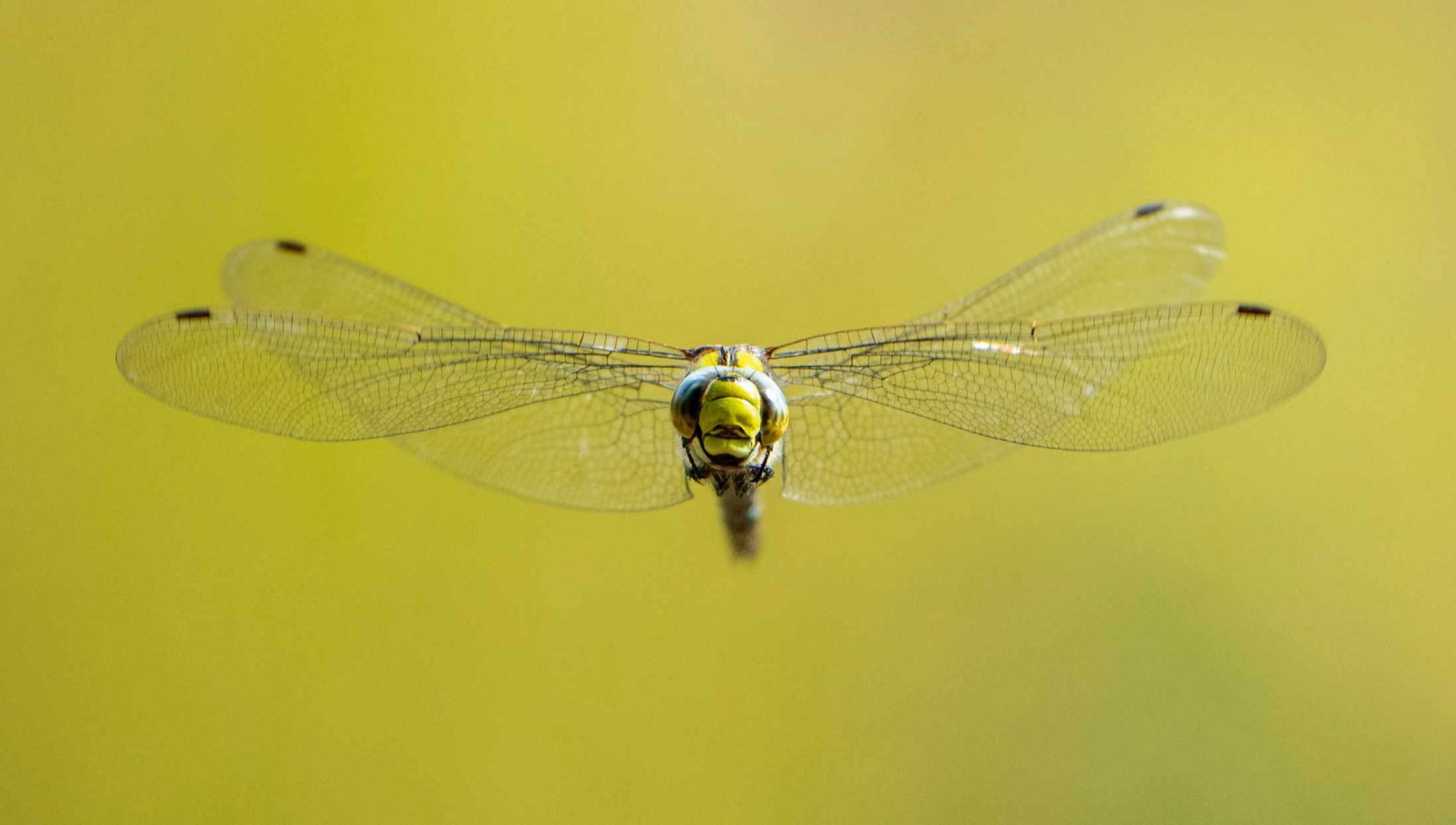
SOUTHERN HAWKER DRAGONFLY
With lime green and blue markings against black, the male southern hawker is a very handsome dragonfly. The female is a little muted in comparison, still with lime green, but no blue, against chocolate brown. The broad stripes on the thorax, behind the head, distinguish them from other hawkers. The species can be seen by still water such as lakes and ponds, or hunting in woodland.
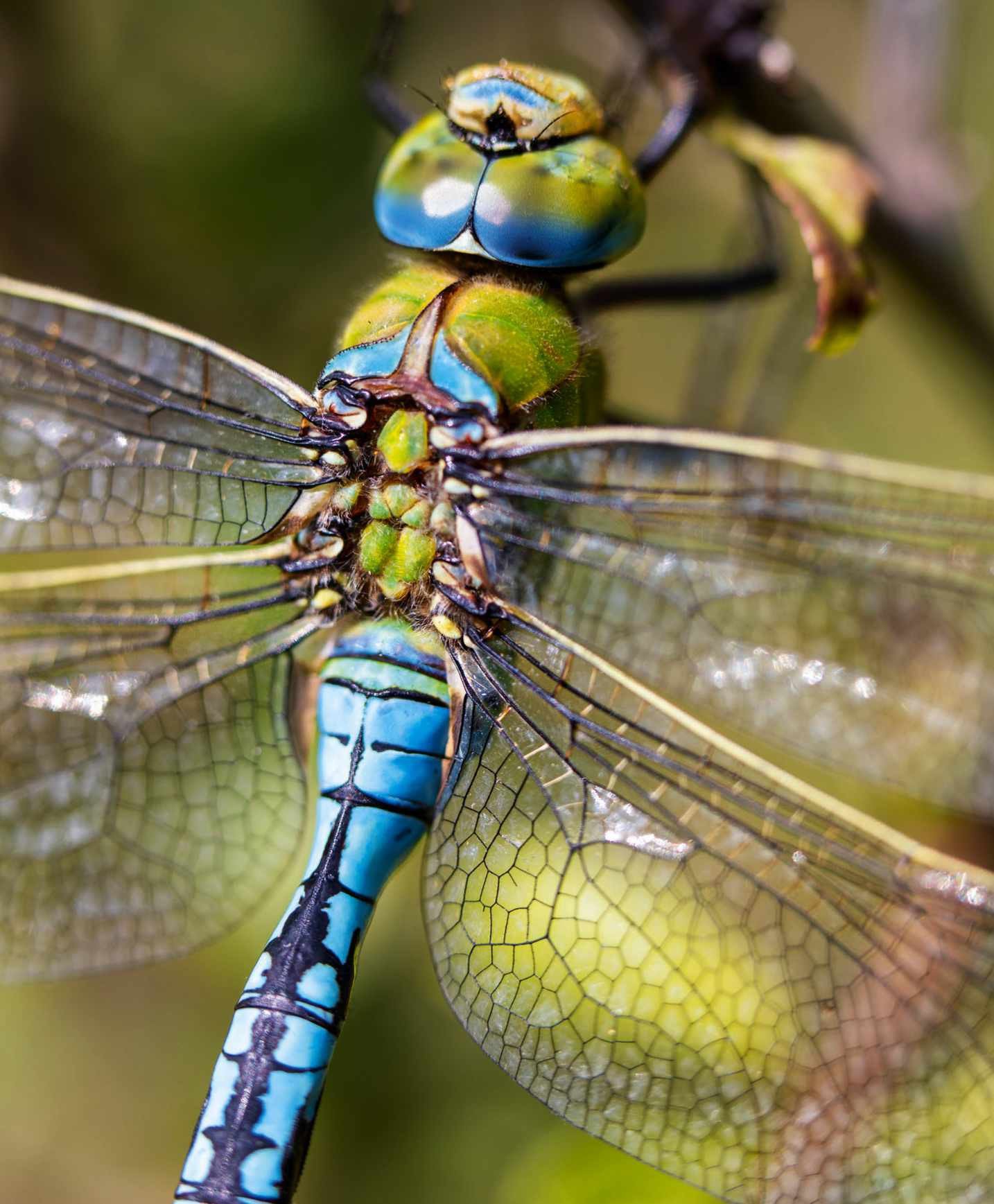
EMPEROR DRAGONFLY
Not quite as long as the golden-ringed dragonfly, the emperor dragonfly is nonetheless an impressive species, measuring 78mm in length. It can eat large insect prey, including butterflies and other dragonflies, often devouring them on the wing. Males have a blue abdomen while females – one is pictured here – have a green abdomen, although on occasion females can be blue as well.
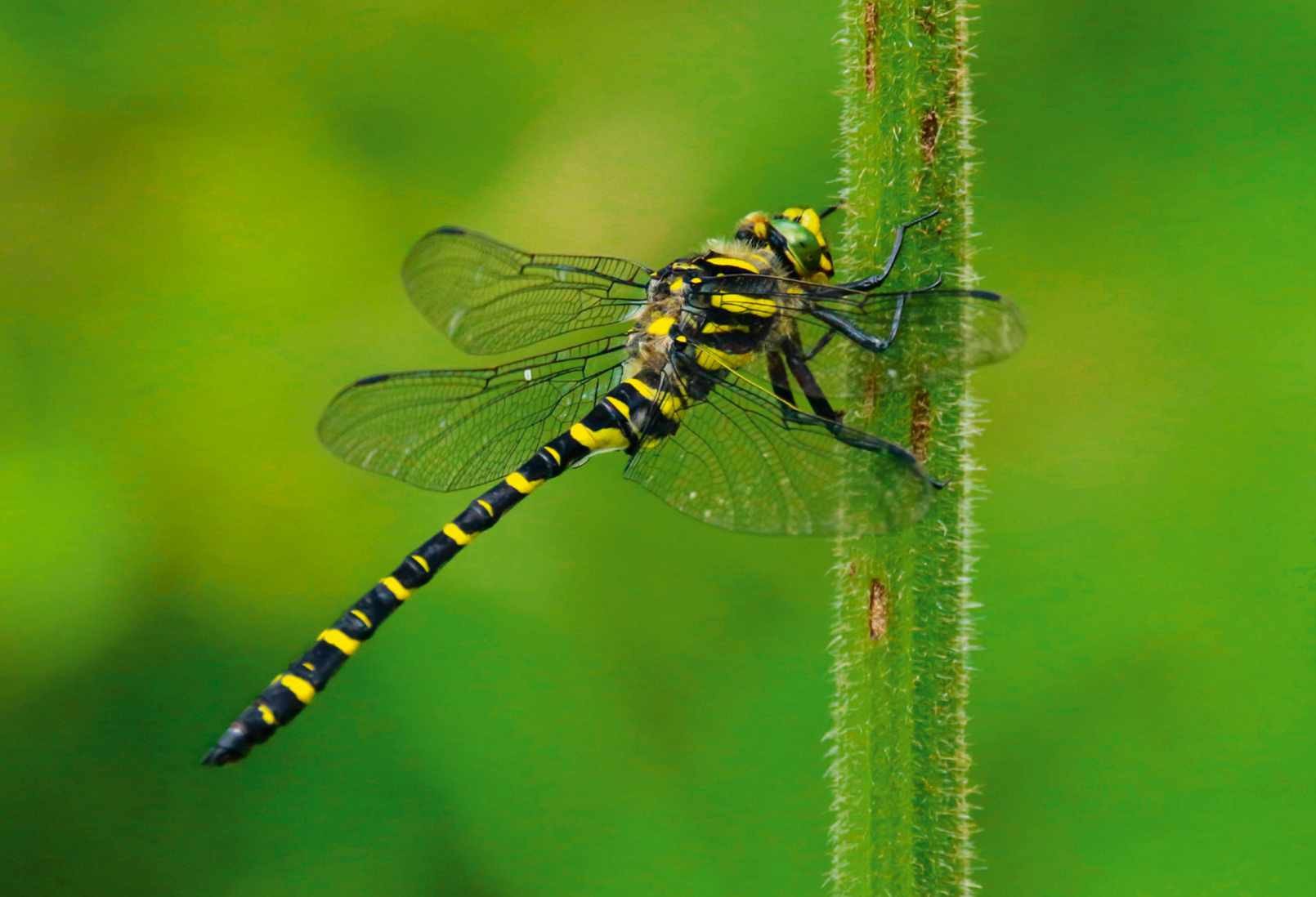
GOLDEN-RINGED DRAGONFLY
Aptly named, the golden-ringed dragonfly is always a striking sight with its black and yellow body and green eyes. The female holds the title of the UK’s longest dragonfly, thanks to her long ovipositor, measuring 84mm in total length. As well as the ovipositor, males and females can be distinguished by the shape of the abdomen, but as they are very fast flyers, it’s not always possible to see the difference. Look out for the species on or near acidic streams in moorlands and heathlands.
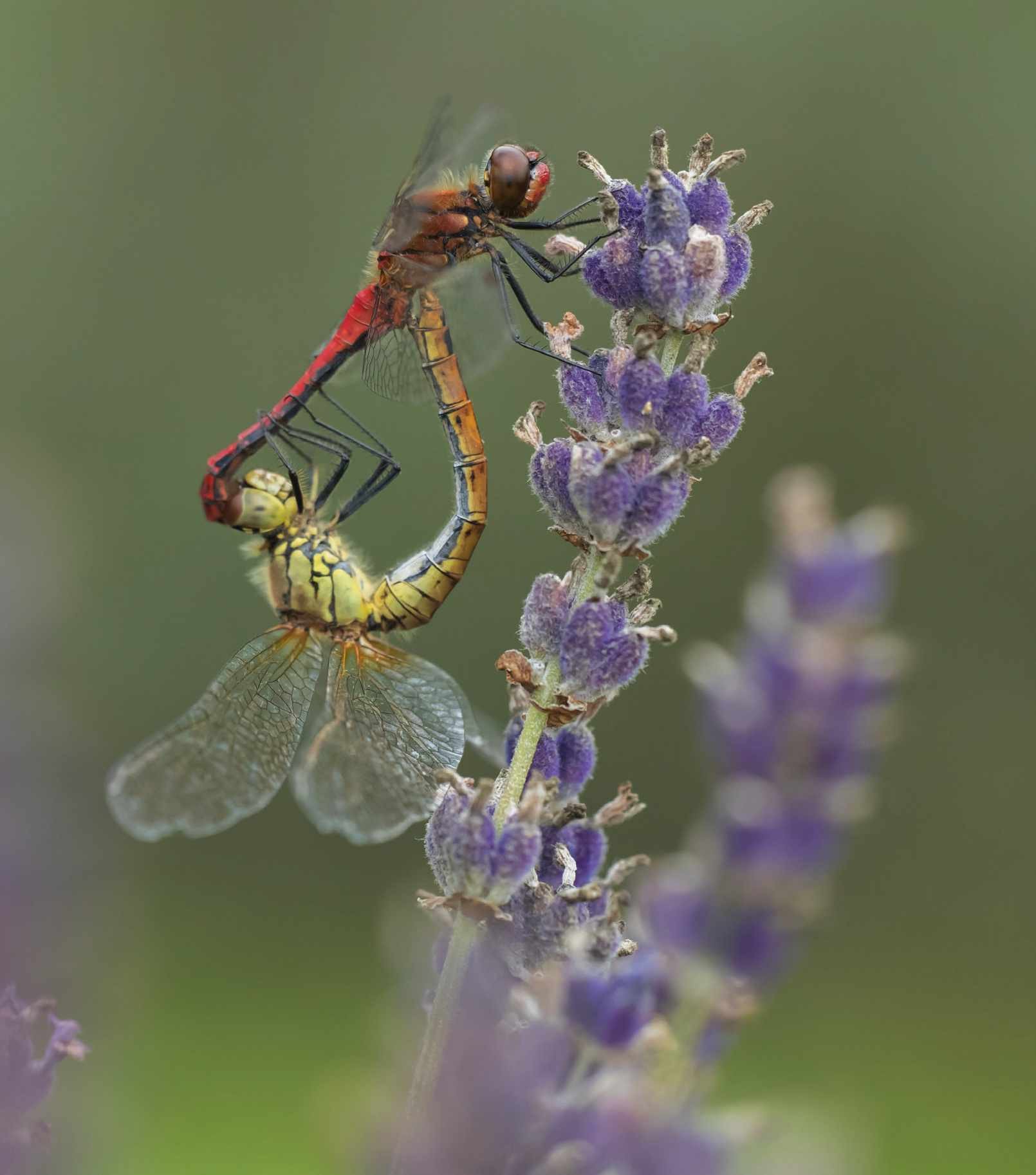
RUDDY DARTER DRAGONFLIES MATING
Mating in dragonflies can look rather odd, as demonstrated by these two ruddy darter dragonflies. The male, above, moves his sperm to the accessory genitalia near the top of his abdomen, then grasps the female, who is below, by the back of her head with the claspers at the end of his abdomen. She then curls up her abdomen so that the tip meets the male’s accessory genitalia and the sperm is transferred across. Ruddy darter dragonflies live by shallow water with plenty of emerging vegetation, and are also found in woodlands. They can be easily confused with other darters, but look out for their completely black legs – in other darters, there are pale stripes against the black.
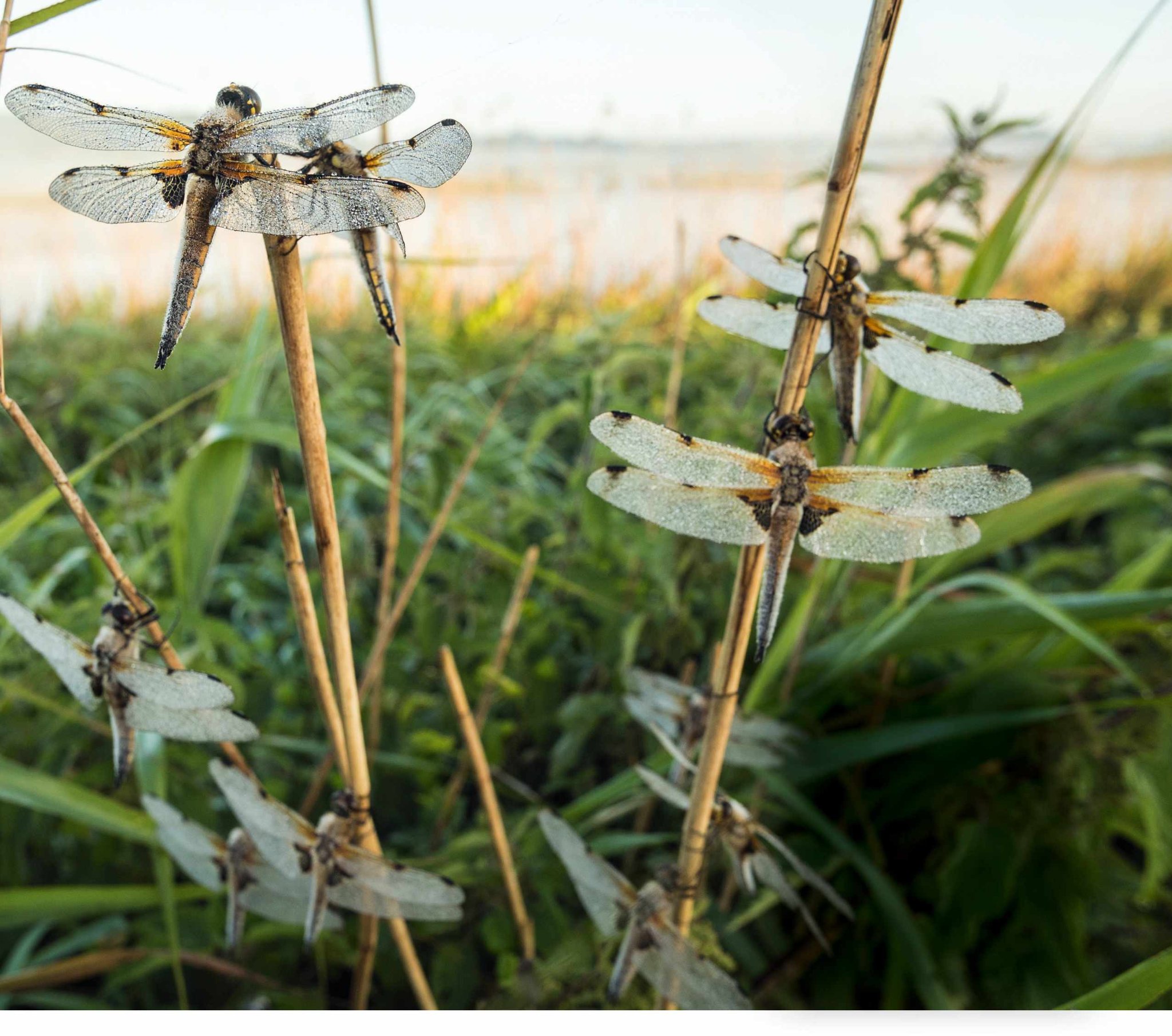
FOUR-SPOTTED CHASER DRAGONFLIES ROOSTING
While four-spotted chaser dragonflies are territorial when defending their own breeding site, they put such territorial behaviours aside when roosting together overnight. Some mass roosting sites are well-known, such as here at Avalon Marshes in Somerset. While other species have one spot, known as a pterostigma, on each leading edge of the front wings, four-spotted chasers have two on each front wing, leading to a total of four spots across both front wings – hence their name.
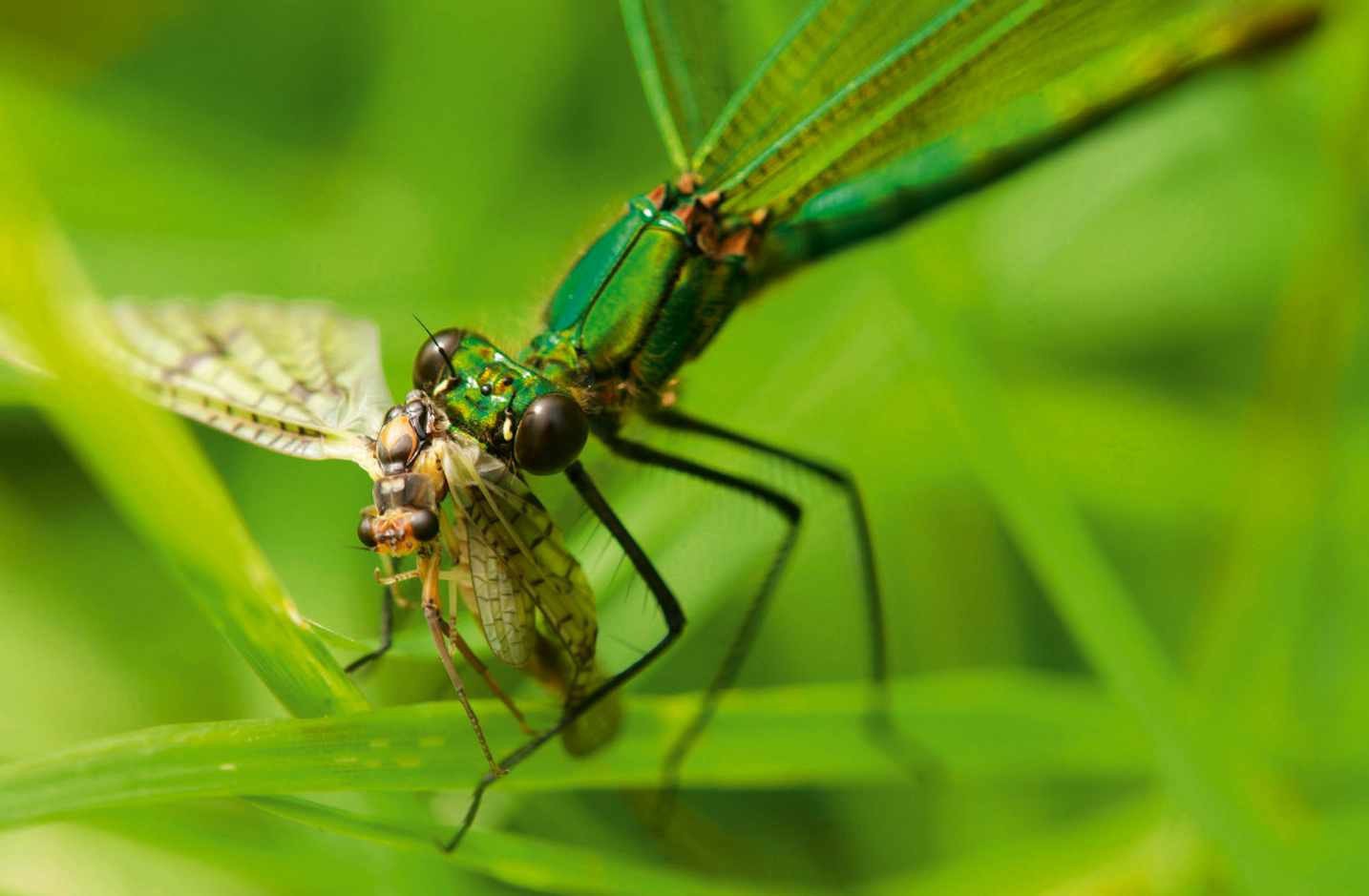
FEMALE BANDED DEMOISELLE WITH PREY
Both dragonflies and damselflies are carnivorous, feeding on other flying insects, such as midges, mosquitoes, butterflies, moths – and mayflies, which this female banded demoiselle has caught. If you’ve paddled along a slow-moving water, you may have spied the iridescent banded demoiselles. The blue-bodied male gives the species its name, with a blue band across its wings, while the female has a green body and translucent green wings.

Megan Shersby is a naturalist and a freelance science and nature writer, based in Northamptonshire. She’s also an occasional host on the Plodcast.